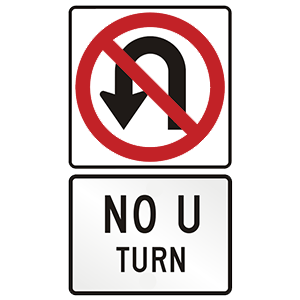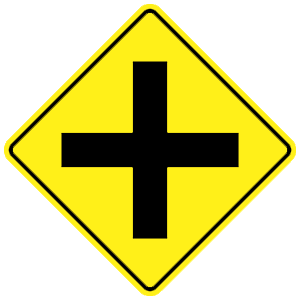2025 New Hampshire Permit Test 7
The following questions are from real DMV written tests. These are some of the actual permit questions you will face in New Hampshire. Each permit practice test question has three answer choices. Select one answer for each question and select "grade this section." You can find this button at the bottom of the drivers license quiz. For a complete list of questions and answers for New Hampshire please visit https://cheat-sheets.dmv-written-test.com/en/new-hampshire/car.
Number of Tests
Number of Question
Passing Score
33. This sign means:

Explanation
A regulatory sign displaying a red circle with a red slash through the middle indicates that a specific action is prohibited. U-turns are not permitted where this sign is posted.
34. When turning left, drivers must yield the right-of-way to:
Explanation
When turning left, drivers must yield the right-of-way to oncoming traffic. Drivers must also always yield the right-of-way to pedestrians, bicyclists, and other drivers who are already in the intersection.
36. You must yield for emergency vehicles:
Explanation
You must yield the right-of-way to any emergency vehicle that is using its siren or flashing lights.
37. Driving at night requires increased caution because:
Explanation
Because it is dark, drivers cannot see as well at night as they can during the day. From one half hour after sunset until one half hour before sunrise, or at any other time when persons or vehicles are not visible for 500 feet, drivers must use their headlights.
38. To reduce the effects of headlight glare at night, you should look:
Explanation
If oncoming drivers do not dim their headlights for you, keep your eyes on the right side of the road ahead. Do not look directly at the oncoming headlights because the glare may blind you for several seconds.
39. On slippery roads, you should:
Explanation
You should slow down at the first sign of rain, snow, or sleet, all of which can create slippery road conditions. When conditions on the road are less than ideal, safety may require that you drive more slowly than the posted speed limit.
40. The amount of space you need to cross traffic depends on the:
Explanation

